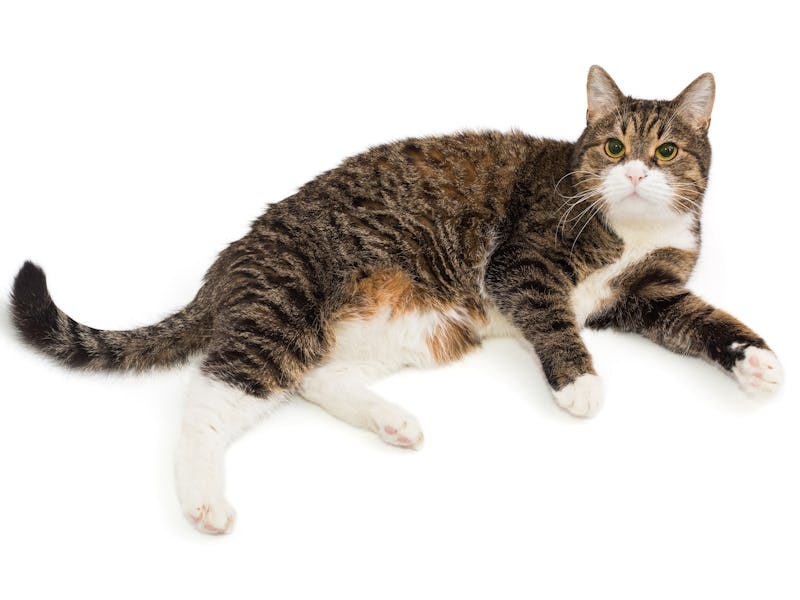This “Strange Thing” Every Cat Has Under Its Belly Baffles Scientists
It’s just a dramatic word for “floppy tum.”

Cats can be enigmas, sometimes. One question that still confounds cat experts is the little tummy flat that every kitty has.
Anatomically, this part of the belly is known as the primordial pouch. Located on the lower belly, the pouch sags and sways as your cat trots about, but that’s where certainty ends. This adorable body part’s purpose remains largely obscure.
What is the primordial pouch?
This “strange thing,” as Bruce Kornreich, a veterinary cardiologist and the director of the Cornell Feline Health Center at Cornell University’s College of Veterinary Medicine, describes the pouch, is nothing but fat under a layer of extra skin — nothing unusual for kitties.
“Cats have a lot of extra skin in general,” Kornreich tells Inverse, pointing out the scruff of the neck that cats use to carry their kittens. The pouch, he says, is essentially a scruff on the belly that becomes visible between 6 and 12 months of age.
Its description as “primordial” harks back to the fact that it appears to have been conserved across cat evolution. All domestic cats have a primordial pouch, as do most big cats. Kornreich says that evolved traits arise from genetic mutations; individuals with those mutations who reproduce pass them along. If a mutation creates a change that helps individuals survive, then animals are more likely to pass those traits down. At some point, cats evolved a mutation that created the primordial pouch, and it just kept getting passed down.
But cat experts still don’t know for sure what purpose this trait serves.
What is the primordial pouch for?
Researchers have distilled theories to three potential purposes. First, the pouch could be protective. “That extra skin can serve as a barrier from predators or plant life,” Kornreich says. If a cat fights another cat or predator, perhaps this fatty paunch protects its vital organs. Or, if a cat stalks prey in vegetation, the pouch can handle lacerations from hardy vegetation.
The pouch may allow for trademark feline flexibility, too. For example, as a cat falls it must quickly contort its body right side up. This extra skin might give them extra leeway to twist and turn midair to right themselves. It could also enable a cat to run faster, letting their torso extend fully so their legs can reach farther forward.
The pouch could also serve as additional fat storage. “In the wild, cats can go a while without successful attempts at capturing prey,” Kornreich says, so surplus fat may help them live through lean times when food is scarce.
Is my cat healthy?
This appendage, however, is a sign of health, rather than of illness or excess weight. As cats get older and their skin loses elasticity, the pouch may sag even lower. If you’re worried that your cat is gaining too much weight, Kornreich recommends asking your vet’s opinion.
Other changes to their figure could come from pregnancy, lactation, or fluid accumulation, which may result from liver disease or malnutrition. If you notice any changes to your cat’s body, your vet is the best source for guidance and treatment.
And if your cat allows it, you may pet the pouch. Kornreich references this highly scientific meme to illustrate areas of the body cats typically allow humans to touch, noting that the tummy is categorized as the “lol do u wanna die?” zone.
But if you are one of the lucky few to have a tummy-rub-loving kitty, that pouch is yours for the pinching.